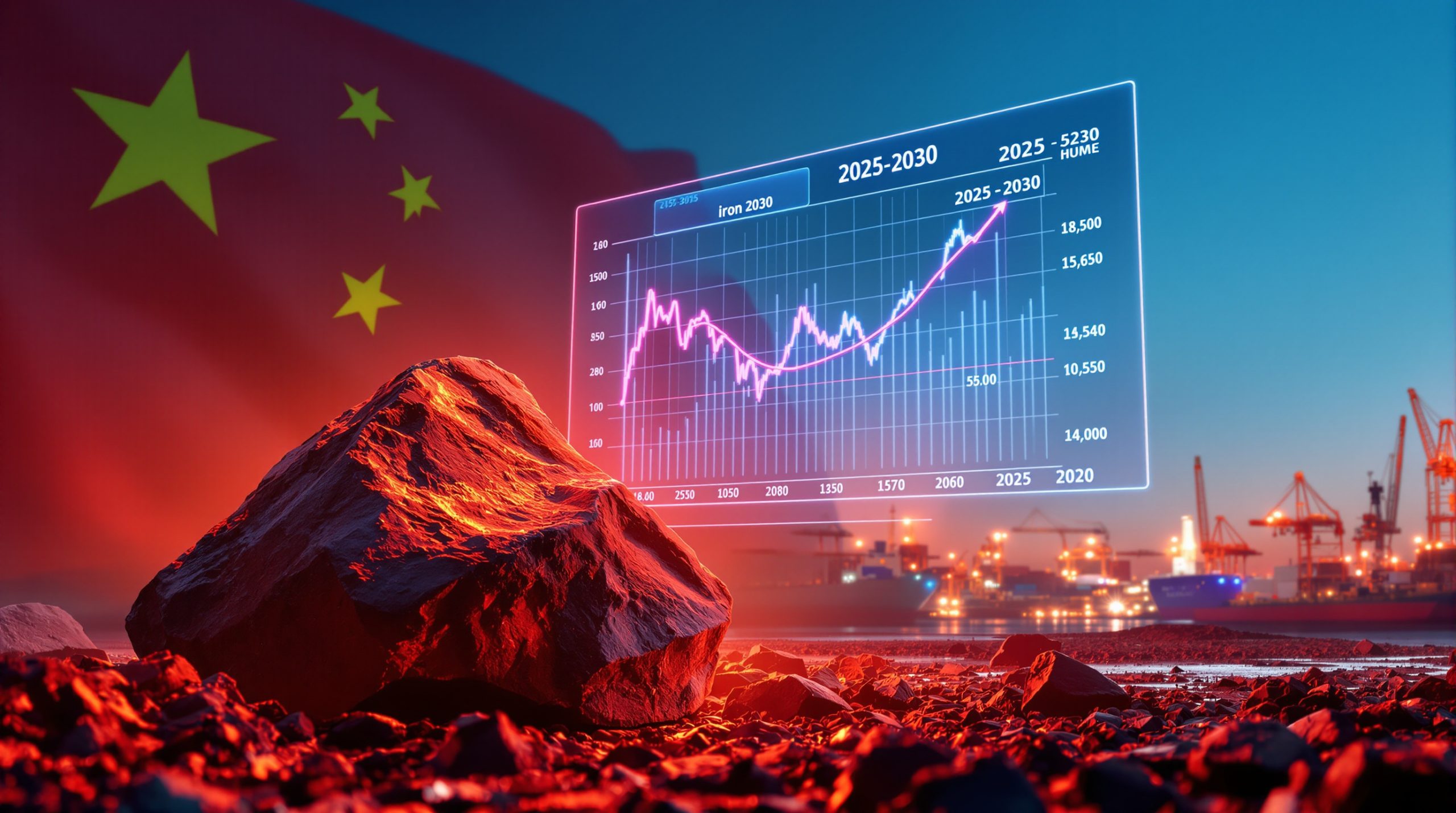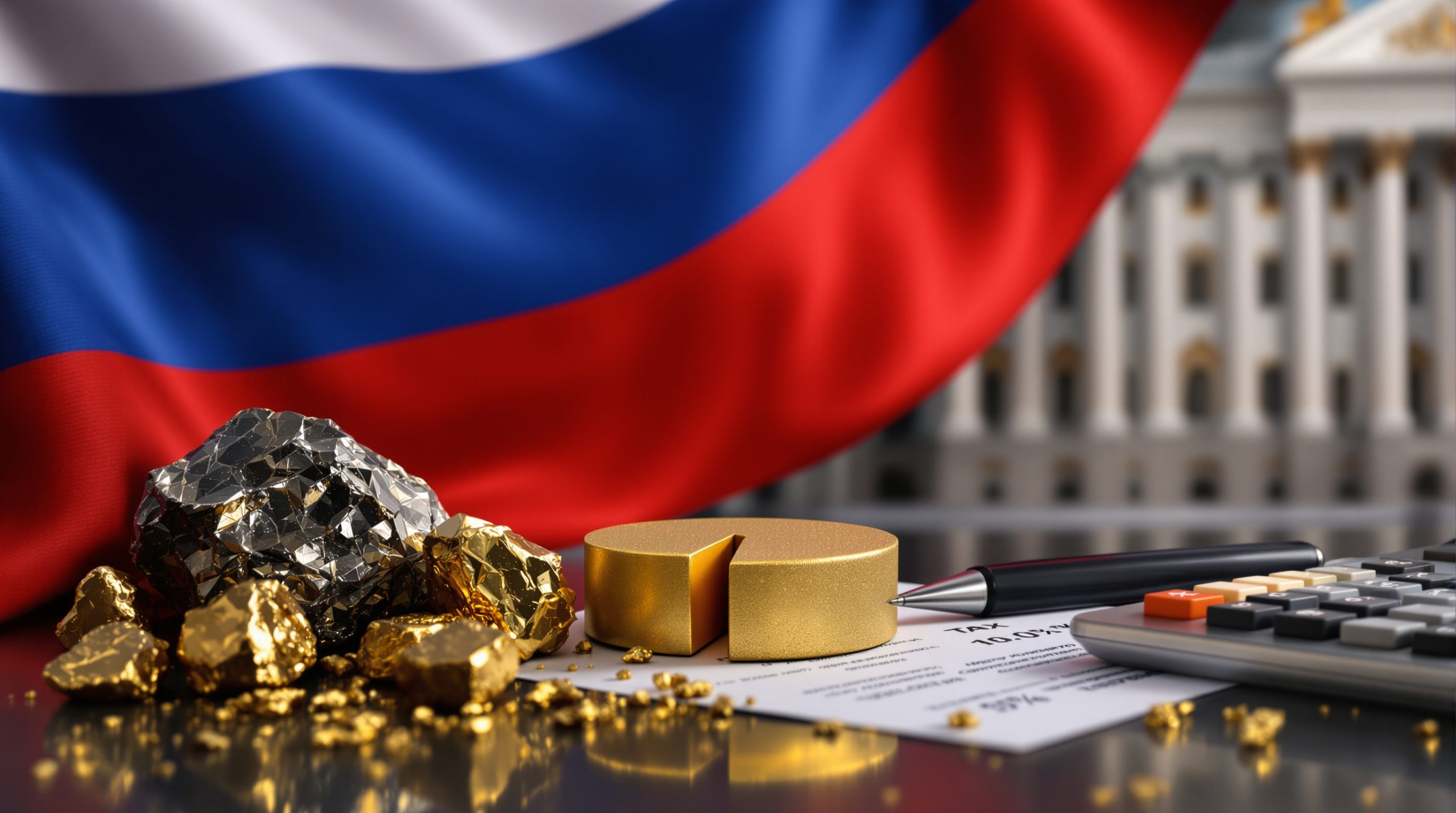What's Happening in the Rare Earth Market Today?
The rare earth market continues to show remarkable stability despite minimal transaction activity across both upstream and downstream sectors. This price resilience comes at a time when trading volumes remain sluggish, creating an interesting market dynamic worth examining.
Current Price Stability Amid Low Trading Volume
Rare earth market prices are maintaining steady levels primarily due to the tightening of low-priced supplies in the oxide market. Even with fewer transactions occurring, suppliers are demonstrating strong resistance to price reductions, creating an effective price floor across various elements.
A notable factor supporting current price levels is the suppliers' optimistic outlook for future market conditions. According to SMM market analysis, "suppliers have high expectations for future prices and are reluctant to sell at low prices, showing strong resistance to price concessions despite sluggish demand."
This stance from suppliers creates a challenging environment for buyers, who face persistent high prices despite weakened end-use demand. The resulting market stalemate has led to a period of price stability that defies typical supply-demand dynamics.
Key Price Points in the Current Market
Current rare earth oxide prices reflect this stability, with key elements maintaining consistent ranges:
- Praseodymium-Neodymium (Pr-Nd) oxide: 444,000-446,000 yuan/mt
- Dysprosium oxide: 1.615-1.625 million yuan/mt
- Terbium oxide: 7.1-7.13 million yuan/mt
- Gadolinium oxide: 160,000-162,000 yuan/mt
- Holmium oxide: 514,000-518,000 yuan/mt
- Erbium oxide: 300,000-305,000 yuan/mt
The metal market shows similar stability, with pricing directly influenced by oxide costs:
- Pr-Nd alloy: 543,000-547,000 yuan/mt
- Dysprosium-iron alloy: 1.56-1.58 million yuan/mt
- Terbium metal: 8.8-8.85 million yuan/mt
- Gadolinium-iron alloy: 156,000-157,000 yuan/mt
- Holmium-iron alloy: 515,000-525,000 yuan/mt
- Lanthanum-cerium alloy: 17,000-19,000 yuan/mt
These price points illustrate significant value disparities between critical and non-critical rare earths, with terbium commanding the highest premium followed by dysprosium – both essential elements for high-performance magnets and specialized applications.
Why Are Rare Earth Prices Remaining Stable Despite Low Demand?
The current rare earth market presents a fascinating case study in price stability during demand weakness. Understanding the factors maintaining this equilibrium provides valuable insights for market participants and observers.
Supply-Side Resistance to Price Reductions
Suppliers across the rare earth value chain are demonstrating remarkable discipline in maintaining price levels despite pressure from weakened demand. This resistance stems from several key factors:
Production cost floors are creating natural price support, particularly in the oxide market. The extraction and processing of rare earth elements involve significant expenses that establish minimum viable selling prices.
Strategic inventory management has become increasingly sophisticated among suppliers. Rather than liquidating stock at discounted rates, many are choosing to withhold materials from the market, preventing oversupply conditions that would trigger price declines.
Market analysis from SMM indicates that "suppliers have high expectations for future prices," suggesting a collective confidence in eventual demand recovery. This optimistic outlook reinforces their unwillingness to accept lower prices in the current environment.
The tightening of low-priced supply sources creates additional upward pressure, as buyers seeking bargains find fewer available options, effectively raising the market's price floor.
Demand-Side Challenges Creating Market Stalemate
While suppliers maintain firm price positions, buyers face their own set of constraints that prevent market resolution:
Magnetic material manufacturers report unimproved order conditions from their customers, limiting their ability to absorb higher input costs. As these manufacturers represent a critical link in the rare earth value chain, their purchasing hesitancy directly impacts market activity.
Price acceptance remains low among material processors who struggle to justify premium material costs when their own customers resist price increases. This creates a bottleneck in the value chain where higher costs cannot be effectively passed downstream.
End-use demand weakness across sectors utilizing rare earth elements further complicates the situation. Without stronger signals from ultimate consumers of products containing these materials, intermediate buyers remain cautious.
The resulting market stalemate creates a unique situation where neither side has sufficient leverage to shift the equilibrium, leading to the current period of price stability despite fundamentally weak demand conditions.
How Are Different Rare Earth Metal Segments Performing?
The rare earth market comprises distinct segments with varying dynamics based on element characteristics, applications, and supply-demand balances. This segmentation creates notable performance differences worth examining.
Metal Market Price Analysis
The rare earth metal market displays consistent price stability across most segments, though with significant value disparities between elements:
Praseodymium-Neodymium (Pr-Nd) alloy maintains a steady range of 543,000-547,000 yuan/mt, reflecting its position as the workhouse material for permanent magnets. This stability comes despite weakened demand from magnetic material manufacturers.
Dysprosium-iron alloy commands a substantial premium at 1.56-1.58 million yuan/mt, highlighting its critical role in enhancing high-temperature performance of magnets for demanding applications like electric vehicle motors and wind turbines.
Terbium metal stands as the market's highest-value element, priced at an extraordinary 8.8-8.85 million yuan/mt. This premium reflects terbium's exceptional scarcity and essential role in specialized applications including phosphors, solid-state devices, and high-performance magnets.
Gadolinium-iron alloy demonstrates relative stability at 156,000-157,000 yuan/mt, positioning it as a mid-tier value element with specialized applications in medical imaging, nuclear reactors, and certain magnetic applications.
Holmium-iron alloy prices hold steady at 515,000-525,000 yuan/mt, maintaining value due to its specialized applications in nuclear control rods, microwave equipment, and certain high-strength magnets.
Lanthanum-cerium alloy remains at the lower end of the value spectrum at 17,000-19,000 yuan/mt, reflecting the relative abundance of these elements and their use in more conventional applications like catalysts and glass polishing.
Supply Chain Dynamics
The rare earth supply chain reveals interesting interconnections that influence market performance across segments:
Oxide-to-metal value transmission creates direct linkages between market segments. As SMM market analysis notes, "Metal plant quotes remain stable at high levels, supported by oxide costs." This demonstrates how pricing discipline in one segment reinforces stability throughout the value chain.
Production cost structures vary significantly between elements, creating natural price differentiation. The complex separation processes required for heavy rare earths like terbium and dysprosium contribute to their premium pricing compared to light rare earths like lanthanum and cerium.
Value chain pressure points are emerging between suppliers maintaining high prices and downstream manufacturers facing weak end-user demand. This creates friction that manifests differently across rare earth segments based on application criticality and substitution potential.
Strategic element positioning is evident as suppliers prioritize inventory management differently across elements. Critical, high-value elements like terbium and dysprosium appear to receive enhanced supply discipline compared to more abundant elements.
What Factors Are Influencing the Rare Earth Market Outlook?
The rare earth market outlook depends on a complex interplay of supply, demand, and strategic factors that market participants must carefully monitor to anticipate future directions.
Short-Term Market Expectations
Market analysis from SMM indicates that "rare earth prices may operate steadily" in the near term, suggesting continued stability rather than significant directional movement. This outlook reflects several key factors:
The persistent standoff between suppliers and buyers creates a market equilibrium that resists change without a catalyst. Suppliers maintain price discipline due to production costs and optimistic future expectations, while buyers remain hesitant due to weak end-use demand.
Limited downside risk appears evident given suppliers' demonstrated unwillingness to sell at discounted rates and the tightening of low-priced supply sources. This creates effective support levels across most rare earth elements.
Equally limited upside potential exists without meaningful demand recovery, particularly from magnetic material manufacturers who represent a critical demand segment. As SMM analysis notes, these manufacturers "have not seen an improvement in order conditions," constraining potential price appreciation.
Trading activities remain sluggish across both upstream and downstream sectors, suggesting continued market stagnation without an external catalyst to stimulate activity.
Critical Supply-Demand Indicators
Market participants should monitor several key indicators that could signal shifts in the current equilibrium:
Magnetic material factory order volumes serve as a critical barometer for rare earth demand, particularly for elements like neodymium, praseodymium, dysprosium, and terbium used in high-performance magnets.
Supplier inventory positions significantly influence pricing strategies. Increased willingness to reduce inventories could signal changing expectations about future market conditions.
End-use sector performance in industries like electric vehicles, wind energy, electronics, and defense systems directly impacts downstream demand for rare earth materials.
Price acceptance thresholds among material processors indicate their ability to absorb or pass through input costs, potentially signaling shifts in value chain dynamics.
Market sentiment regarding future directions affects current positioning by both buyers and sellers, creating self-reinforcing cycles that can maintain or break the current stalemate.
What Are the Implications for Rare Earth Market Participants?
The current rare earth market conditions create specific strategic challenges and opportunities for different market participants, requiring thoughtful positioning to navigate this complex environment.
Strategic Considerations for Buyers
Buyers of rare earth materials face a challenging landscape that necessitates careful strategic planning:
Inventory optimization becomes critical when balancing immediate needs against price expectations. Buyers must determine optimal purchase timing and volumes to manage both supply security and cost control objectives.
Cost pass-through evaluation requires assessing the feasibility of transferring higher input costs to end customers. This depends on competitive dynamics, substitution possibilities, and end-market price sensitivity.
Alternative material assessment may provide options for certain applications where rare earth substitution is technically feasible. This includes examining reduced rare earth content designs or alternative technologies that accomplish similar performance outcomes.
Supplier relationship management takes on heightened importance during market stalemates. Developing strategic partnerships with key suppliers can potentially provide preferential access to limited supplies or more favorable pricing arrangements.
Market intelligence capabilities become particularly valuable for identifying early signals of changing conditions. Buyers who can anticipate market shifts gain significant advantages in timing purchasing decisions.
Outlook for Suppliers and Producers
Rare earth suppliers and producers face their own set of strategic imperatives in the current environment:
Price discipline maintenance requires balancing the desire to preserve price levels against the reality of inventory carrying costs. Suppliers must determine sustainable positions that don't create excessive financial burden.
Production volume optimization becomes increasingly important when demand weakens. Adjusting output to match current market requirements helps prevent inventory accumulation while maintaining operational efficiency.
Operational efficiency initiatives take on greater significance during margin compression. Finding cost reduction opportunities throughout the value chain helps maintain profitability despite challenging market conditions.
Customer segmentation strategies allow focusing resources on the most promising market segments. Identifying customers with inelastic demand or strategic growth potential enables more effective allocation of limited supply.
Scenario planning for demand recovery enables proactive positioning for eventual market improvements. Suppliers who anticipate which end-use sectors will recover first can align their capabilities accordingly.
The continuing focus on critical minerals energy transition is likely to support rare earth demand in the long term, particularly as governments implement strategic measures such as the critical raw materials facility and establish a national critical minerals reserve to secure supply chains.
FAQs About the Rare Earth Market
What is causing the current rare earth market stalemate?
The market is experiencing a standoff between suppliers unwilling to reduce prices due to production costs and optimistic future expectations, while downstream magnetic material manufacturers face weak end-user demand and cannot justify accepting higher-priced inputs. This creates a situation where neither side has sufficient leverage to shift the equilibrium, resulting in price stability despite fundamentally weak demand conditions.
Which rare earth elements are commanding the highest prices?
Terbium currently commands the highest price point in the market at approximately 7.1-7.13 million yuan/mt for oxide and 8.8-8.85 million yuan/mt for metal, followed by dysprosium oxide at 1.615-1.625 million yuan/mt. These premium prices reflect both the scarcity of these elements and their critical applications in high-performance magnets and specialized technologies.
How are rare earth metal prices related to oxide prices?
Metal prices directly reflect oxide costs, as oxides serve as the primary input for metal production. As SMM market analysis notes, "Metal plant quotes remain stable at high levels, supported by oxide costs." This creates a cost-based pricing structure throughout the value chain, where pricing discipline in the oxide market directly influences metal pricing.
What would trigger a significant change in rare earth market prices?
A meaningful shift would likely require either a substantial improvement in end-use demand from sectors using magnetic materials, or a significant change in supplier inventory positions or production costs that would alter current pricing strategies. External factors like policy changes affecting mining quotas, export restrictions, or technological breakthroughs could also disrupt the current equilibrium.
How does the rare earth market impact the broader technology sector?
Rare earth elements are critical components in numerous high-tech applications including electric vehicles, wind turbines, electronics, and defense systems. Price stability or volatility directly impacts production costs and potentially availability of these technologies. The current price stability provides predictability for technology manufacturers, though at relatively high input cost levels that may constrain growth in price-sensitive applications.
Further Exploration
Readers interested in learning more about rare earth market dynamics can explore related educational content from specialized metals market analysis providers like Rare Earths Price Charts, which offer regular market analysis and price tracking for various metal and mineral commodities. Understanding the interconnections between rare earth elements and their applications provides valuable context for anticipating future market developments.
Despite the current stability, participants should remain vigilant about potential commodity market volatility that could impact pricing in the future. Furthermore, staying informed about trends in mining industry evolution will provide additional context for understanding the broader forces shaping rare earth supply dynamics.
Looking for the Next Major Mineral Discovery in the Rare Earth Sector?
With rare earth prices maintaining remarkable stability despite low trading volume, now is the perfect time to gain an edge on significant discoveries across the ASX. Visit Discovery Alert's dedicated discoveries page to understand how early identification of mineral discoveries can generate substantial investment returns, powered by their proprietary Discovery IQ model.




